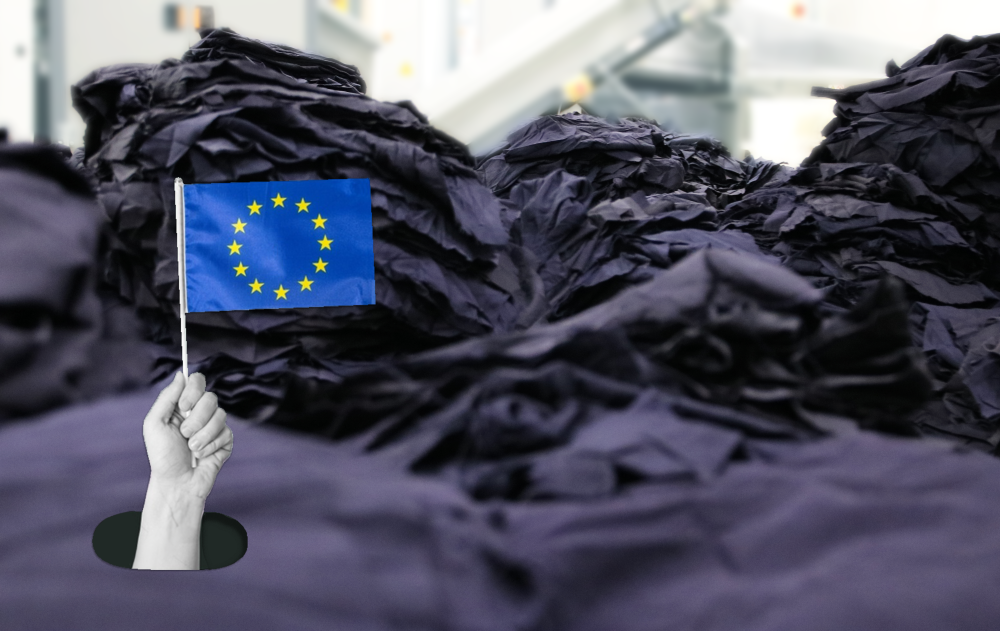The European Green Deal, launched in December 2019, aims to transform the EU into a sustainable and environmentally friendly model, targeting climate neutrality by 2050. It includes policies to address environmental challenges while promoting economic growth and social equity. This article is the first in a series exploring the impact of the EU Textile Strategy on the textile industry, detailing the intersection of the Green Deal's ambitious objectives with the specific measures affecting textile production and consumption.
Unraveling the European Green Deal's Sustainability Measures
In the subsequent articles, we will delve into specific aspects outlined in the framework, which includes
ESPR initiatives
- Ecodesign
- Digital product passport
- The destruction of unsold and returned textile goods
Sustainable production and consumption
- Green claims initiatives and fighting greenwashing
- The Product Environment Footprint
- Measures against microplastics,
- EU ecolabel for textiles
- CSDD
Waste management measures
- Extended Producer Responsibility (EPR)
- Restrictions on textile waste exportation to non-OECD countries
- Quotas for textile reuse and recycling
- PFAS
- CDSR
Before diving into the abyss, let's take a moment to understand in what broader framework these measures are appearing. So let's give you a summary on how the Green Deal got to where it is now.
A Historic Framework of the European Green Deal
The roots of the European Green Deal can be traced back to earlier environmental initiatives within the EU, which gained momentum with the adoption of the Treaty on the European Union in 1992. This pivotal moment laid the groundwork for integrating sustainability and environmental considerations into EU policies and strategies. Over subsequent decades, the EU implemented a series of directives and frameworks aimed at slowing down climate change, enhancing energy efficiency, and promoting renewable energy sources. Milestones include the Kyoto Protocol in 1997 and the establishment of the EU Emissions Trading System in 2005, which pioneered carbon trading on a global scale.
Building on these foundations, the European Green Deal was officially launched in 2019, initiating a new era of ambitious environmental action and sustainable development within the EU. It has evolved into a comprehensive policy framework with various initiatives and legislative proposals aimed at achieving its objectives. This includes the Fit for 55 legislative package in 2021, which revises existing legislation to align with the Green Deal's goals. The focus has been on refining and implementing measures across sectors, emphasizing key milestones and targets for 2030.
CEAP: Circular Economy Action Plan
A key component of the European Green Deal is the Circular Economy Action Plan (CEAP), which directly impacts the textile industry. The CEAP aims to promote sustainable resource use by encouraging recycling and reuse, minimizing waste, and fostering a transition to a circular economy. The plan includes measures to improve product design for sustainability, support the use of recycled materials, and reduce the environmental footprint of products, including textiles. The CEAP is closely linked to the EU Textile Strategy, which targets specific sustainability challenges in the textile sector.
"Fast Fashion is out of Fashion"
Consumers should benefit longer from high-quality textiles, and circular clothes should become the norm.
EU Textile Strategy
Amid the broader canvas of the European Green Deal, the textile industry presents itself as a pivotal player with significant environmental and socioeconomic implications. European consumption of textiles ranks among the highest globally, applying immense pressure on natural resources, water, and land use. Moreover, the textile sector is a major contributor to greenhouse gas emissions and waste generation, emphasizing the urgency of addressing its environmental footprint.
Recognizing these challenges, the Green Deal outlines ambitious targets and measures to transform the textile industry, promoting sustainability, circularity, and responsible production practices. Introduced in 2021, the EU Textile Strategy for Sustainable and Circular Textiles represents a milestone in the EU's efforts to address these sustainability challenges. This comprehensive roadmap outlines key priorities and initiatives as part of the 2030 vision, aimed at promoting longevity, recyclability, and the elimination of hazardous substances in textiles, respecting social rights, and ensuring high-quality products.
By aligning with the Green Deal's objectives, the textile industry has the potential to become a driving force for positive change, contributing to the EU's broader climate and environmental goals while nurturing innovation, resilience, and competitiveness. By 2030, consumers should benefit longer from high-quality textiles, and circular clothes should become the norm, rather than the throw-away standard we have today. In line with this strategy, the motto 'Fast fashion is out of fashion' encapsulates the shift towards sustainable and enduring fashion practices.
In the following weeks, we will take a deep dive into a few of these topics, providing a comprehensive overview of the European Green Deal's impact on the textile industry.
Stay tuned!
Navigating the EU Textile Strategy
This article is the first in our series, offering a comprehensive look at the transformative policies under the European Green Deal and their specific impact on the textile industry. In the coming weeks, be sure to stay tuned for more in-depth articles that will provide fascinating insights and updates on how these policies are shaping our sector.




